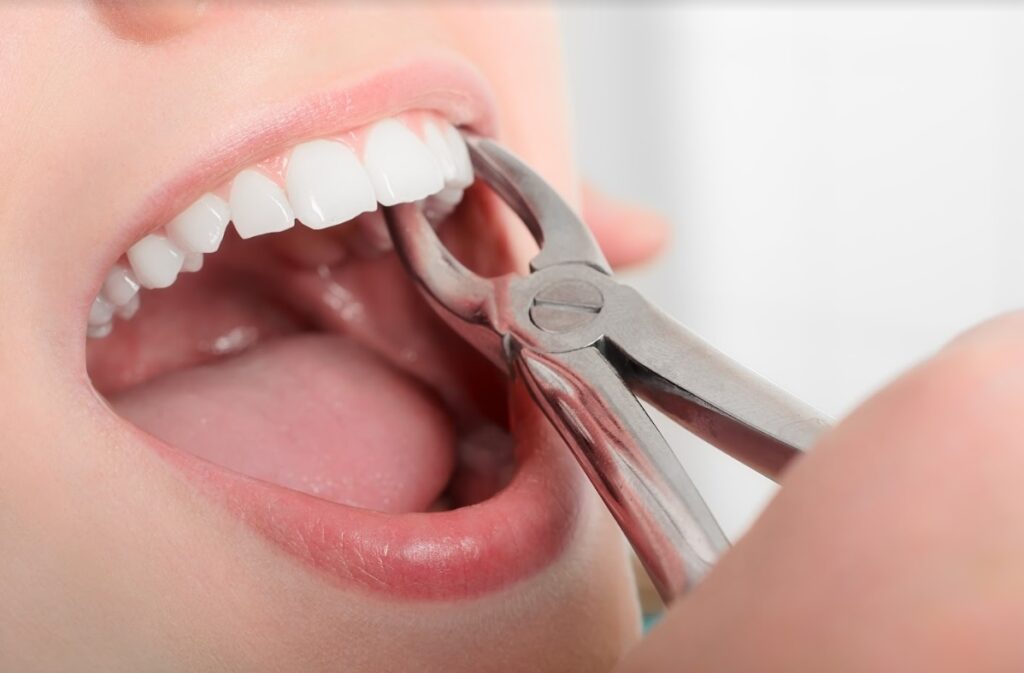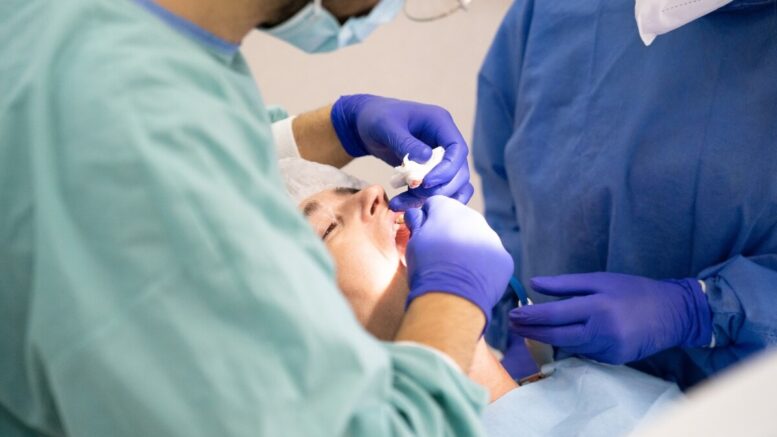Do you have missing teeth? Is it impacting the way that you look and feel about yourself? You don’t need to be embarrassed anymore – many options are available for replacing those missing teeth, such as dental bridges. Depending on your situation, a bridge may be one of the best ways to regain functionality and aesthetics without major oral surgery or complicated treatments. Learn how this solution works and see if it might work for you!
What is a Dental Bridge?
A dental bridge is a prosthetic device that replaces missing teeth by connecting an artificial tooth known as a pontic to two abutment crowns that fit over the remaining teeth on either side of the gap left behind after tooth loss. The bridge is then cemented, providing improved aesthetics, better-chewing ability, and easier speaking and enunciating.
Different types of bridges
Several dental bridges are available today, including traditional bridges, cantilever bridges, Maryland bonded or resin-retained bridges and implant-supported bridges. Each type has advantages and disadvantages, so it’s important to discuss your needs with your dentist to determine the best type.
1. Traditional Bridges
Traditional bridges consist of one or more pontics held in place by two abutment crowns that fit over the remaining teeth on either side of the gap left after tooth loss. They are typically made out of porcelain or metal and are the most commonly used type of bridge.
2. Cantilever Bridges
Cantilever bridges are similar to traditional bridges. Still, instead of being held in place by two abutment crowns, they are only supported by one abutment crown on one side of the gap. They are typically used when there is only one remaining tooth to support the bridge and can be made of porcelain or metal.
3. Maryland Bonded or Resin-Retained Bridges
These bridges consist of a single pontic bonded directly to the adjacent teeth with a special bonding material known as composite resin. They offer improved aesthetics compared to traditional bridges and require less preparation, but they can only be used to replace one or two missing teeth at a time.
4. Implant-Supported Bridges
Implant-supported bridges consist of one or more pontics supported by dental implants placed in the jawbone rather than natural teeth. They provide improved stability and function compared to traditional bridges but require surgery for placement and longer healing times.
Benefits of Having a Dental Bridge
A. Improved Appearance and Smile Restoration
Missing teeth can cause your smile to look incomplete, which can harm your self-confidence and negatively affect social interactions. Dental bridges close gaps left behind after tooth loss, restoring the symmetry of your smile for an improved appearance.
B. Maintaining Facial Structure and Preventing Further Tooth Loss
Missing teeth can cause your remaining teeth to shift and become misaligned, leading to further tooth loss and a change in your facial structure. Dental bridges help to maintain the spacing between teeth for improved stability, preventing further tooth loss and maintaining your natural facial structure.
C. Easier to Eat and Speak Comfortably Again
Missing teeth or gaps in your smile can make it difficult to chew food or speak clearly, as the food may get stuck in the gaps, or you may need help enunciating certain words properly. Dental bridges close gaps left behind after tooth loss, restoring normal chewing ability and improving speech clarity for more comfortable eating and speaking.
The Process of Getting a Dental Bridge

A. Comprehensive Examination
Before getting a dental bridge, seek local dental practitioners for a comprehensive examination to ensure you are suitable for the procedure and determine the best type. During this examination, X-rays may be taken to check for any underlying issues that could interfere with the placement of bridges, such as decay or gum disease.
B. Preparation of the Teeth and Abutment
If your dentist finds no underlying issues, they will prepare your teeth by removing some enamel to make room for the abutment crowns supporting the bridge. These abutment crowns are custom-made from porcelain or metal and fit securely over the remaining teeth.
C. Taking Impressions and Making the Bridge
After your teeth and abutment have been prepared, your dentist will take an impression of them to create a custom-made bridge for you. This bridge is typically made of porcelain or metal and consists of one or more artificial pontics that securely fit between the two abutment crowns.
D. Placement and Seating of the Bridge
Once your custom-made bridge has been created, it will be placed on your teeth and cemented by your dentist. It may take several visits to get everything right before the bridge is ready for use.
Care for Dental Bridges
A. Brushing and Flossing Daily
It’s important to brush and floss your teeth twice daily to keep your dental bridges clean and plaque-free. Use a soft-bristled toothbrush and fluoride toothpaste, as hard bristles can damage the abutment crowns that support the bridge.
B. Routine Cleanings and Checkups by Your Dentist
Regular checkups by your dentist are also important to ensure that everything is in good condition, including abutment crowns, pontics, gums, and any artificial teeth or implants used to support the bridge.
C. Avoid Chewing on Hard Objects or Biting Your Nails
Chewing on hard objects or biting your nails can damage your bridge’s abutment crowns and pontics, so avoiding these habits is important. If you have any questions or concerns regarding the care of your dental bridge, be sure to speak with your dentist.
Conclusion
Dental bridges are a great solution for replacing missing teeth and giving back your smile and the confidence that comes with it. With the help of dental professionals, local dental practitioners, and their expertise in this field, you can also benefit from this innovative and long-lasting solution. Whether you’re looking to fill in gaps between teeth or replace many teeth at once, dental bridges are an effective way to give yourself a complete and beautiful smile. Say goodbye to missing teeth today and say hello to a brand new you!
